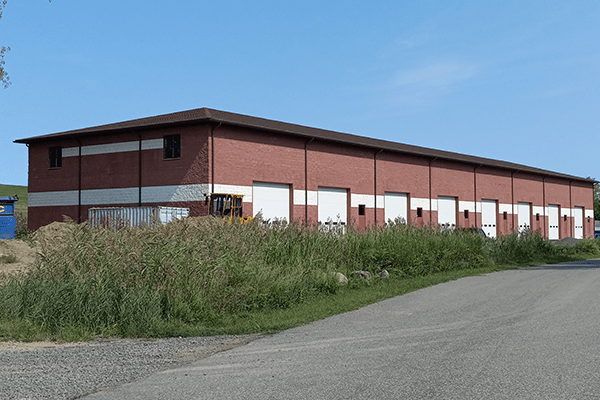|
RCBJ-Audible (Listen For Free)
|
Board Votes Unanimously To Issue $10 Million Bond Anticipation Notes; 2024 Includes $1.65 Million Tax Levy On County Residents To Run Shelter — An 18 Percent Overall Increase
By Tina Traster
Rockland County Legislator Lon Hofstein recently voiced concern over the projected $18 million or more Rockland Green is planning to spend of taxpayer money to convert a warehouse shell into an animal shelter in the Village of West Haverstraw.
At Rockland Green’s meeting last month, the legislator reminded Chairman Howard Phillips that the legislative body refused to fund the county’s original Hi-Tor Animal Shelter rebuild in July 2022 because the price tag was “too high.” Rockland Green at the time assured the legislature that the cost for constructing a new shelter would be lower. In addition, Hofstein reminded Phillips that his original projections to build a new shelter pale in comparison to what they are now — and are likely to be.
Orangetown Supervisor Teresa Kenny – the only town supervisor who has raised questions about the financial viability of Rockland Green’s plans to build an animal shelter – also pushed back at the meeting, wanting to know more about Rockland Green’s plan to issue short-term $10 million bond anticipation notes.
Phillips, who engineered the demise of Hi-Tor Animal Shelter and who is steering the purchase and conversion of the warehouse building, pushed back on the scrutiny saying: “if it is going to be done right, this is the price.”
After additional discussion, the Rockland Green board, comprised of five town supervisors, two village mayors and nine county legislators, voted unanimously to approve the resolution to issue $10 million in short-term Bond Anticipation Notes (BANs) and authorize the public authority to replace those notes with long term bonds.
Bond Anticipation Notes are used by government entities to secure short-term funding until a formal bond offering can be underwritten and sold.
The money from the Bond Anticipation Notes will be used to (i) reimburse Rockland Green for the costs of purchasing the warehouse property on Beach Road in West Haverstraw that it hopes to retrofit into an animal shelter; (ii) reimburse Rockland Green for some preliminary costs in connection with the development of the animal shelter, and (iii) pay costs of issuance of the Bond Anticipation Notes.
BANs sold for $10 million dollars yield less than $10 million because of the costs related to issuance, such as legal fees, underwriting fees, interest reserves, and sales commissions. When the bonds are ultimately issued to replace the notes, part of the proceeds from the sale of the bonds may be used to pay the interest on the notes, as well as the costs of issuing the bonds.
“I was told Rockland Green was using a short-term bond to pay itself back the purchase price of the warehouse plus some additional funds “in case” they need to buy equipment, etc.,” said Kenny.
Based on prior construction projects undertaken by Rockland Green, most notably the MRF (Material Recovery Facility), the costs of building the shelter are likely to spike beyond $18 million.
In addition to the bonding, taxpayers will be on the hook for nearly $1.65 million to run Rockland Green’s shelter for 2024. up from $1.4 million in 2023, or an almost 18 percent increase.
“I am still looking for answers,” said Hofstein, in an interview days after the Rockland Green meeting. “I voted for the bond because we need to get it going. But it’s not a blanket okay rolling forward. I want to understand what they’re doing and how they’re doing it. I’m trying to find that information.”
Nearly two years ago, in July 2022, the Rockland County Legislature was expected to sign off on bonding an additional $10 million for the building of a new animal shelter in Pomona but the resolution was yanked from the agenda by County Legislature Chairman Jay Hood, also a member of Rockland Green. The county had planned to spend $7.75 million to build a new facility with a combination of county funds, grants, and monies raised by the shelter. The tabled resolution would have capped county expenditure on the entire project at $17.7 million but limited construction costs for the new facility to nearly $14 million.
But at the time, Rockland Green, the former Rockland County Solid Waste Management Authority, moved to take over the animal shelter. The public authority was granted approval from state legislators to amend its charter to manage an animal shelter in Rockland County. The effort was led by Phillips and Clarkstown Town Supervisor George Hoehmann, who sits on the authority’s board, along with all the county’s town supervisors. The bill was sponsored by Assemblyman Kenneth Zebrowski (D-Rockland) and then Senator Elijah Reichlin-Melnick (D-38th District).
Blindsided, county legislators thought they’d have another chance to review the charter amendment. Additionally, questions posed about prospective costs, or a plan were never answered.
Last January, Phillips, during a Rockland Green board meeting said the public authority was buying the warehouse for $3.8 million, and the purchase and retrofit would cost up to $15 million. At earlier meetings and in public, he had been saying it would cost around $4 million ($3.8 million, plus $225,000 to lease for one year) to buy the vacant warehouse building, and “another couple of million” to retrofit it. In addition, Rockland Green used $225,000 of taxpayer money to rent the warehouse during 2023 to mitigate the warehouse seller’s capital gains, according to Phillips.
“We knew this was trouble,” said one Legislator who asked not to be named. “So where are the savings? You’ve got a new building, employees. This whole thing got out of control via deception. We were supposed to get another vote as to whether this would have legs. This whole thing moved forward based on a lie.”
The actual cost of the project going forward remains vague.
“Howard Phillips was blaming just about everyone for the rising costs,” said Amanda Cosentino, who attended the Rockland Green meeting in December. “But what didn’t make sense was that he said that Rockland Green hadn’t been able to anticipate just how many dogs it would have in the shelter.”
Cosentino said Phillips said the number would exceed 30 but the former Hi Tor volunteer said the shelter at any given time was housing at least 40 dogs, with many more in foster care.
Phillips mentioned the rising cost of raw materials, but he also said Rockland Green was saving money because it was not planning on sound-proofing the building, adding that the new shelter is not close to residential neighborhoods. In fact, there are residential enclaves on both sides of Railroad Avenue and North Wayne Avenue that are less than a mile from the Ecology Road shelter. Noise travels as the crow flies, as they say.
Animal activists are disappointed to learn that Rockland Green is skimping on noise barriers because there is a proposal to build a 24/7 450,000 square-foot distribution center on Beach Road, across the narrow road from the proposed shelter. Soundproofing would benefit the animals housed at the shelter, as well as ease the stress on employees.
Warehouse applicants Eric Bergstol, a local landowner, and New Jersey developer Efrem Gerszberg are working with New York State Department of Environmental Conservation (NYSDEC) to determine the scope of cleanup and remediation needed on the 34-acre vegetative site sitting in the crook of Railroad Avenue and Beach Road. The site, owned by North Rockland Associates since 1969, was an active construction landfill through the mid-1990s, according to Bergstol.
The applicants are proposing a 450,000 square-foot, 76-bay warehouse distribution center that would operate 24/7. Bergstol said the footprint of the warehouse would likely cover about 30 percent of the site, with parking and vegetation making up the balance. He said the DEC looks for solutions like this to capped landfills.
















